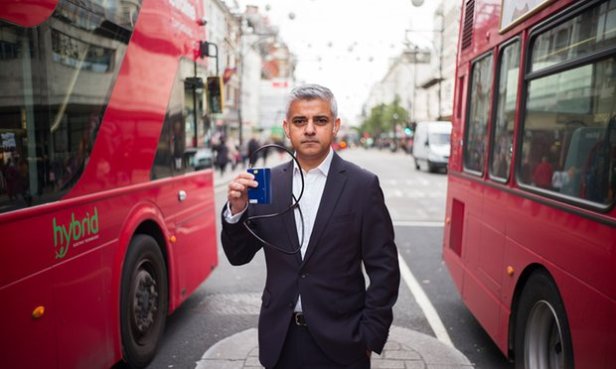In the UK, every year 40.000 people die early because of air pollution, worldwide the death rate is 7 million. Toxic air is mainly related to lung cancer, heart diseases, asthma, and stroke.

After Brexit, it was not sure if the UK would have still attempted to follow EU legislation for pollution and the safeguard of the ecosystem. Unfortunately, Theresa May left little room for uncertainty.

Environmentalists claimed the government should do more to tackle air pollution, and Friends of the Earth and Greenpeace asked to ban diesel cars, which are thought to pollute far more than laboratory tests had reported.
In 2015, Greenpeace conducted an investigation denouncing that industry lobbyists pushed European governments to weaken their policies on air pollution.
Recently, the two NGOs together with London Cycling Campaign , CleanAir in London, and other organisations wrote an open letter to Sadiq Khan in which they ask the mayor for a diesel-free London. London’s mayor has never tried to hide his commitment for a greener London.

Using Stachowiak’s Pathways to change: 10 Theories to Inform Advocacy and Policy Change Efforts (2013) we can hypothesise that, in their attempt to tackle pollution in the UK, FoE is employing more tactical theories, whilst Greenpeace is trying to make change happen through a more institutional pathway, using global theories.
Whilst trying to put pressure on the government, Friends of the Earth seems to focus more on communities and supporters who can gradually change their habits, for example walking or using a bicycle, avoiding to get a taxi during rush hour, growing plants and trees to catch air pollution. The NGO also designed a Clean Air Kit to inform people on how to protect themselves from toxic air and launched a petition they can sign.

This is also what is described as behaviour change in 9 ways to change the world? Theories of change for engaging people on global issues, which “can have a significant impact, alongside or separate to formal politics” and can operate at an individual, community or society level (2014, p14).
Greenpeace, instead, seems to put pressure directly on the power elites, asking for advocacy to decision makers or influentials. Specifically: they seem to employ the Policy Window Theory of Change. Policy windows are moments in which there is a possibility for policy change.
Greenpeace is defining the problem (framing the issue and carrying out investigations about it), developing policy solutions (banning diesel), strengthening organizational capacity and influencing the political climate (appealing for Khan’s help for example). These strategies can lead to a shift in social norms and strengthened base of support (increased political will), which lead consequently to improved policies and finally to a change in social and/or physical conditions.
We don’t know which theory of change is the most effective one, but we certainly know that “power is taken, never given” (Wilson, 2016). So we’d better take it.
References
Miller-Dawkins, M. (2014). 9 Ways to Change the World? Theories of change for engaging people on global issues.
Stachowiak, S. (2013). Pathways for change: 10 theories to inform advocacy and policy change efforts.
Wilson, J. (2016). Protest like your basic rights depend on it – because power is taken, never given. The Guardian, 26 December. Available from: https://www.theguardian.com/commentisfree/2016/dec/26/protest-march-women-civil-rights?CMP=twt_gu [Accessed 26 December 2016].

I really appreciate that you analysed how different organisations tackle the same problem. It is interesting to see which ways one can go in order to change such a big issue.
I for myself would love to go by bike a lot more (I might start with getting a bike first…) but I am a bit afraid of the traffic, to be honest. I like that tfl comes up with a detailed explanation of how the bike routes look like when you look it up online. It’s only a detail but it really helps me, as I only moved to London quite recently and mostly I don’t have a clue about the streets. In terms of different approaches: I think some of them also have to go hand in hand, i.e. reducing traffic and convincing people to use bikes more frequently. As cycling is rather dangerous over here, the number of cyclists might increase with a dropping number of accidents and/or vehicles anyway. I read a few weeks ago that Sadiq Khan aims at building two superhighways for cyclists and also wants to spend mor money on cycling initiatives. I think that’s a great thing to start with.
Here’s the link, if you are interested in the article: https://www.theguardian.com/environment/bike-blog/2016/dec/05/sadiq-khan-to-spend-770m-on-london-cycling-initiatives
LikeLiked by 1 person
This is an issue that I have been tracking and I was interested to read your comparison of how different campaigning organisations are approaching the issue. I also wrote about the a legal intervention as a pathway for change (https://francesbuckingham.com/2016/11/02/see-you-in-court-the-rise-of-legal-activism/). I don’t think any one is more effective than the other but it will be interesting to see how all these theories of change can come together to really accelerate progress on air pollution in London.
LikeLiked by 2 people